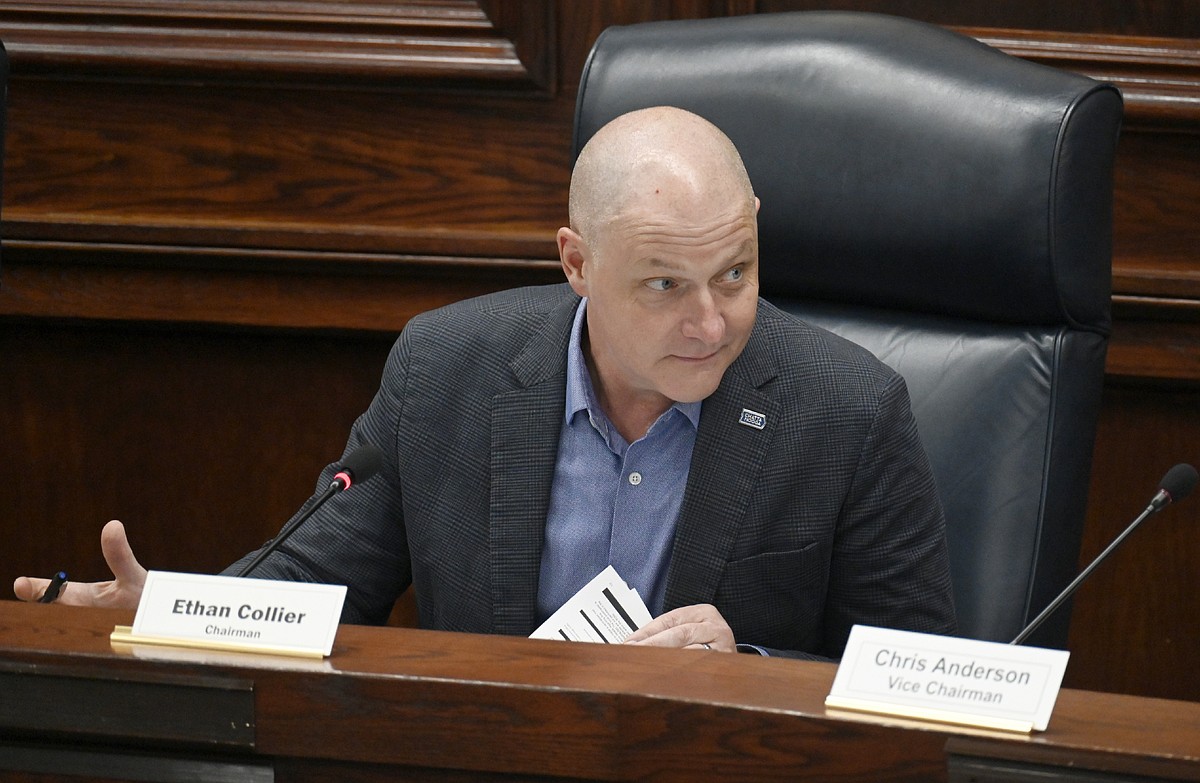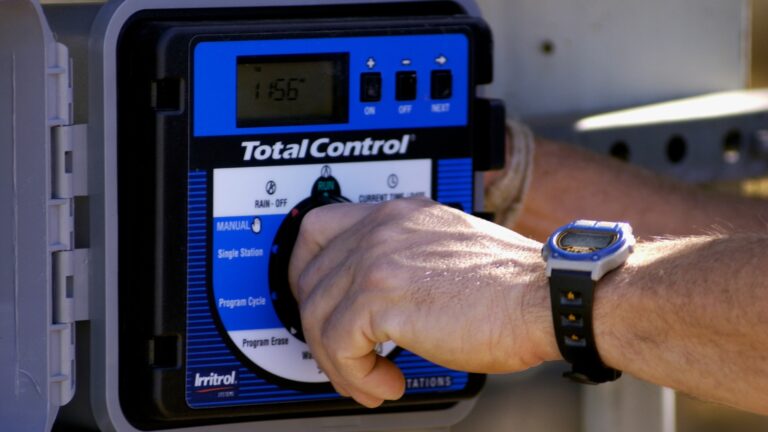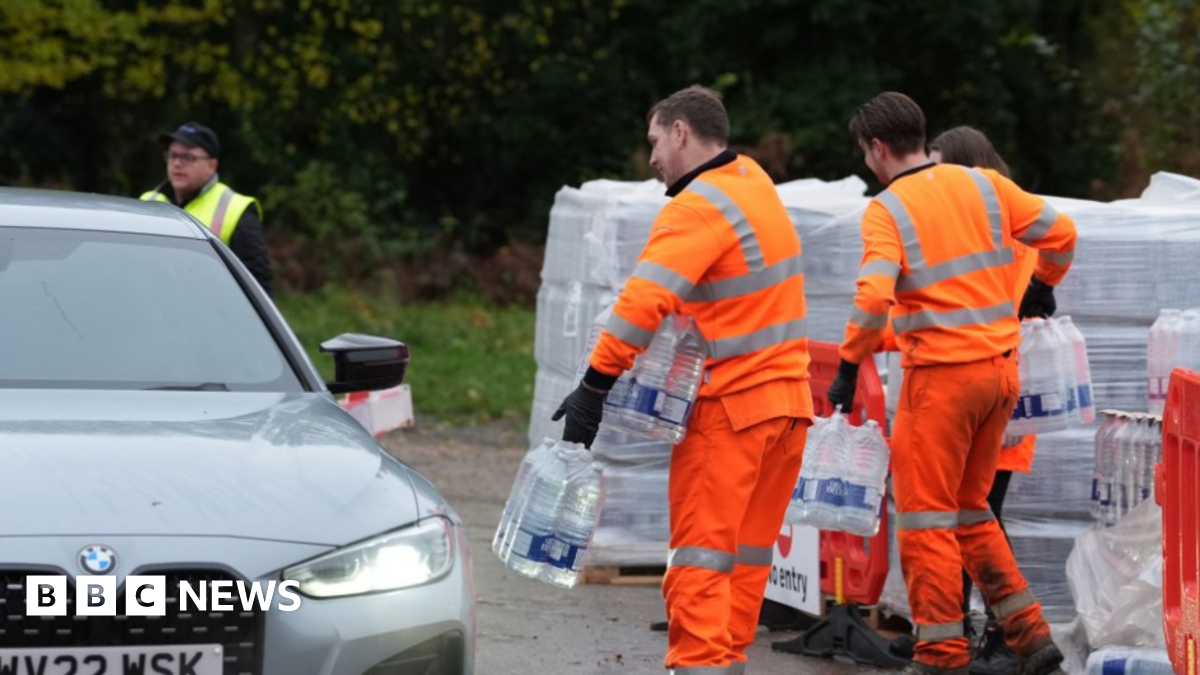Collier Construction gets most of penalty for water quality violations waived – Chattanooga Times Free Press

Report on Environmental Compliance and Sustainable Development in Tennessee Construction
Incident Summary and Regulatory Action
- Parties Involved: Ethan Collier Construction Co. and the Tennessee Department of Environment and Conservation (TDEC) Division of Water Resources.
- Violation: The company was cited for violations of the Water Quality Control Act at the Kellys Ferry Hideaway development site.
- Specific Infractions: Failure to obtain the required Construction General Permit and failure to install or maintain necessary erosion and sediment control measures before disturbing more than one acre of land.
- Initial Penalty: A civil penalty of $39,640 was assessed by TDEC.
Impact on Sustainable Development Goal 6: Clean Water and Sanitation
The violations directly contravene the objectives of SDG 6, which aims to ensure the availability and sustainable management of water and sanitation for all.
- Risk to Water Quality: The failure to implement erosion and sediment controls poses a significant risk of polluting nearby water resources, undermining SDG Target 6.3, which focuses on improving water quality by reducing pollution.
- Corrective Measures: Ethan Collier Construction Co. has reportedly completed all corrective actions mandated by the TDEC director’s order, thereby mitigating further environmental damage and taking steps to restore compliance with water protection standards.
Relevance to SDG 11 and SDG 15: Sustainable Communities and Life on Land
This case highlights the critical intersection of urban development, environmental regulation, and the preservation of terrestrial ecosystems, central to SDG 11 (Sustainable Cities and Communities) and SDG 15 (Life on Land).
- The company initially operated under the assumption that a state permit was not required, as the planned disturbance was under one acre.
- An increase in home sales led to an unintentional expansion of construction activities, resulting in the disturbance of more than one acre of land over a four-month period without the requisite permit.
- This lack of oversight and permitting represents a failure in sustainable construction practices, which are essential for achieving SDG Target 11.6 (reduce the adverse per capita environmental impact of cities).
- The absence of erosion controls directly threatens local ecosystems, contributing to land degradation and habitat disruption, in opposition to the goals of SDG Target 15.1 (conserve and restore terrestrial and inland freshwater ecosystems).
Resolution Framework and Contribution to SDG 16 and SDG 17
The resolution process illustrates the function of strong institutions (SDG 16) and the potential for partnerships (SDG 17) to enforce environmental law and promote sustainable outcomes.
- Institutional Enforcement (SDG 16): TDEC’s issuance of a director’s order and civil penalty demonstrates the role of effective and accountable institutions in upholding environmental regulations.
- Negotiated Settlement: Following an appeal by the company, the penalty structure was renegotiated. The upfront civil penalty was reportedly reduced from $7,928 to $5,000, plus administrative damages.
- Partnership via Supplemental Environmental Project (SDG 17): The company is negotiating to perform a Supplemental Environmental Project (SEP) valued at $10,000 in lieu of the cash penalty. This approach aligns with TDEC policy and fosters a public-private partnership to achieve tangible environmental benefits. An SEP directs funds toward projects that actively improve the environment, often in the area impacted by the violation, representing a more constructive outcome than a purely punitive fine and advancing the collaborative spirit of SDG 17.
Analysis of Sustainable Development Goals in the Article
1. Which SDGs are addressed or connected to the issues highlighted in the article?
The article discusses issues of environmental regulation, water quality protection, land development, and corporate accountability, which connect to several Sustainable Development Goals (SDGs). The primary SDGs addressed are:
- SDG 6: Clean Water and Sanitation: The core issue revolves around violations of the “Water Quality Control Act,” specifically the failure to implement erosion and sediment control measures, which directly threatens the quality of local water resources.
- SDG 15: Life on Land: The construction project involved disturbing “more than 1 acre of land.” Uncontrolled land disturbance and erosion lead to soil degradation and can harm local terrestrial and freshwater ecosystems.
- SDG 11: Sustainable Cities and Communities: The violations occurred at a residential construction site, the “Kellys Ferry Hideaway neighborhood.” This connects to the broader issue of managing the environmental impact of urban and suburban development.
- SDG 16: Peace, Justice and Strong Institutions: The article details the role of a state institution, the “Tennessee Department of Environment and Conservation,” in enforcing environmental laws, assessing penalties, and managing an appeals process. This highlights the function of legal frameworks and accountable institutions in environmental governance.
2. What specific targets under those SDGs can be identified based on the article’s content?
Based on the article’s content, the following specific SDG targets can be identified:
- Under SDG 6 (Clean Water and Sanitation):
- Target 6.3: By 2030, improve water quality by reducing pollution. The company’s failure “to install or maintain erosion and sediment control measures” is a direct risk to water quality, as runoff from the construction site could pollute nearby water bodies. The enforcement action aims to mitigate this risk.
- Target 6.6: By 2020, protect and restore water-related ecosystems. The regulations enforced by the Division of Water Resources are designed to protect these ecosystems from the negative impacts of land development, such as sedimentation.
- Under SDG 15 (Life on Land):
- Target 15.1: By 2020, ensure the conservation, restoration and sustainable use of terrestrial and inland freshwater ecosystems. The requirement for a “Construction General Permit” for projects “disturbing over an acre” is a mechanism to ensure land use is sustainable and does not unduly harm these ecosystems.
- Target 15.3: By 2030, combat desertification, restore degraded land and soil… and strive to achieve a land degradation-neutral world. The lack of erosion control measures contributes directly to soil and land degradation. The “corrective actions” the company completed are a form of land restoration.
- Under SDG 11 (Sustainable Cities and Communities):
- Target 11.6: By 2030, reduce the adverse per capita environmental impact of cities. The case represents an effort by a regulatory body to reduce the adverse environmental impact of a housing development project within the Chattanooga-Hamilton County area.
- Under SDG 16 (Peace, Justice and Strong Institutions):
- Target 16.3: Promote the rule of law at the national and international levels and ensure equal access to justice for all. The entire situation unfolds within the legal framework of the “Water Quality Control Act,” involving violations, penalties, and an appeals process, demonstrating the rule of law in action.
- Target 16.6: Develop effective, accountable and transparent institutions at all levels. The article showcases the Tennessee Department of Environment and Conservation acting as an effective institution by identifying violations, issuing a “director’s order,” and negotiating a settlement. The appeals process also points to institutional accountability.
3. Are there any indicators mentioned or implied in the article that can be used to measure progress towards the identified targets?
Yes, the article contains several explicit and implicit indicators that can measure progress or compliance related to the identified targets:
- Indicator for Land Disturbance and Regulation (Targets 15.1, 15.3): The specific threshold for requiring a permit, “the disturbance of more than an acre of land,” serves as a clear regulatory indicator. The company’s violation of this threshold is a measurable instance of non-compliance.
- Indicator of Institutional Enforcement (Target 16.6): The assessed “civil penalty of $39,640” and the negotiated final payment (a reduced fee plus a “$10,000” supplemental environmental project) are quantitative indicators of the state’s enforcement actions against violations of environmental law.
- Indicator of Compliance and Corrective Action (Targets 6.3, 15.3): The statement that the company had “already completed the corrective actions it was ordered to take” is a qualitative indicator of progress towards mitigating the environmental damage and achieving compliance.
- Indicator of Legal and Administrative Processes (Target 16.3): The requirement to obtain a “permit” before construction is an indicator of a functioning regulatory system. The company’s failure to do so, and the subsequent four-month process to apply for one after being cited, indicates both the existence and the complexity of these administrative procedures.
- Indicator of Environmentally Beneficial Investment (Targets 6.3, 6.6): The proposal to “perform a supplemental environmental project valued at $10,000” in lieu of a cash penalty is a measurable indicator of investment in environmental improvement, directly addressing the harm caused by the violation.
4. Summary Table of SDGs, Targets, and Indicators
| SDGs | Targets | Indicators Identified in the Article |
|---|---|---|
| SDG 6: Clean Water and Sanitation | 6.3: Improve water quality by reducing pollution. 6.6: Protect and restore water-related ecosystems. |
|
| SDG 11: Sustainable Cities and Communities | 11.6: Reduce the adverse per capita environmental impact of cities. |
|
| SDG 15: Life on Land | 15.1: Ensure conservation of terrestrial and freshwater ecosystems. 15.3: Combat land degradation. |
|
| SDG 16: Peace, Justice and Strong Institutions | 16.3: Promote the rule of law. 16.6: Develop effective, accountable, and transparent institutions. |
|
Source: timesfreepress.com
What is Your Reaction?
 Like
0
Like
0
 Dislike
0
Dislike
0
 Love
0
Love
0
 Funny
0
Funny
0
 Angry
0
Angry
0
 Sad
0
Sad
0
 Wow
0
Wow
0
















































:focal(1500,1000)/https://media.globalcitizen.org/a6/9a/a69a4720-d8a1-4715-b596-18738d03c05c/rotary_polio_hero_image.jpg?#)







/countries/sri-lanka/photo-credit---dmc-sri-lanka.tmb-1200v.jpg?sfvrsn=dc298bcc_1#)







.jpg?#)










